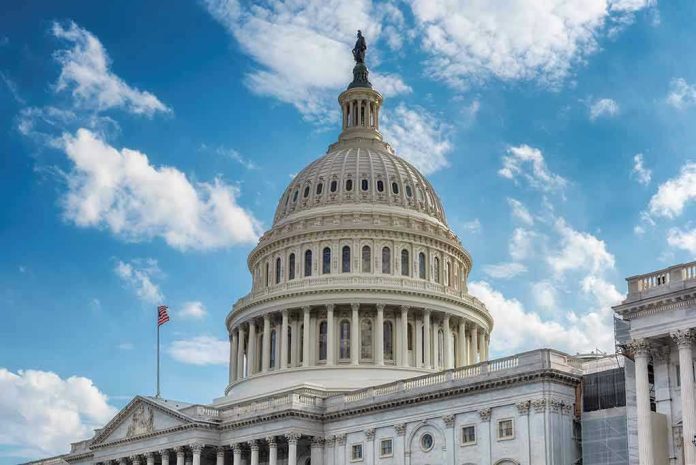
In an extraordinary move, Speaker Mike Johnson and the House of Representatives have voted to codify 50 of President Donald Trump’s executive orders, transforming them into permanent law and marking a notable shift in American legislative processes.
At a Glance
- House codifies 50 Trump executive orders, solidifying his policies into law.
- Action aims to prevent future reversals and preserve Trump’s legacy.
- Effort reflects unified Republican control of Congress and the presidency.
- Democrats express concern over legislative bypassing and permanence of policies.
Codifying Trump’s Legacy
The House of Representatives, under the leadership of Speaker Mike Johnson, has embarked on a historic journey to codify 50 of President Trump’s executive orders as federal law. This bold legislative action is designed to ensure that the “America First” agenda remains intact and immune to the whims of future administrations. This unprecedented scale of codification takes place amid heightened partisan division and raises significant questions about the balance of power between the executive and legislative branches.
The political landscape post-2024 has been fertile ground for such moves. With Republicans controlling both chambers of Congress and the presidency, there’s a concerted effort to solidify Trump’s policy initiatives. The codification of executive orders is a strategic maneuver to provide continuity and stability, preventing a repeat of the policy reversals seen during the Biden administration. This legislative push underscores the Republican commitment to preserving Trump’s legacy against the tides of political change.
Driving Forces Behind the Codification
Key figures like Speaker Mike Johnson and Representatives Greg Steube and Keith Self have been at the forefront of this legislative effort. They’ve introduced numerous bills aimed at codifying Trump’s executive actions, citing a mandate from the 2024 elections as their guiding principle. This move, they argue, reflects the will of the American people and ensures that Trump’s policies continue to guide the nation.
Republican lawmakers are motivated by a desire to cement the “America First” agenda, focusing on areas such as school choice, election integrity, deregulation, and immigration. This effort not only reflects their policy priorities but also serves as a countermeasure against potential future Democratic administrations seeking to unravel Trump’s accomplishments. Democratic opposition, however, is vocal, warning of the erosion of legislative scrutiny and the risks of entrenching controversial policies.
Unprecedented Legislative Action
Since the beginning of Trump’s second term in January 2025, the House has been on a legislative sprint, passing bills to codify executive actions at a rapid pace. As of July 2025, 50 executive orders have been codified, with several bills advancing to the Senate for further action. This legislative endeavor is not just about preserving policy but also about setting a precedent for future administrations to follow.
Critics, particularly from the Democratic side, argue that this level of codification bypasses traditional legislative processes, potentially leading to poorly vetted laws with unintended consequences. They express concerns about the long-term implications for legislative deliberation and flexibility, fearing that it may lead to a rigid policy framework that hinders future governance.
Implications and Consequences
The codification of these executive orders carries significant implications for various sectors and communities. In the short term, it ensures policy continuity, reducing the likelihood of reversals. However, it also heightens partisan tensions, with Democrats warning of long-lasting institutional consequences. The codification effort impacts education, elections, and immigration, among other areas, fundamentally altering the regulatory landscape.
Long-term, the codification of executive orders sets a new precedent in American politics. It not only makes these policies more durable but also requires full congressional action to repeal them. This move could energize both Republican and Democratic bases as they prepare for the 2026 midterms, potentially reshaping the political landscape once again.
Sources:
Rep. Steube press release (July 2025)
Holland & Knight executive order tracker (July 2025)
Rep. Keith Self press release (July 2025)
NAFSA regulatory tracker (July 2025)










